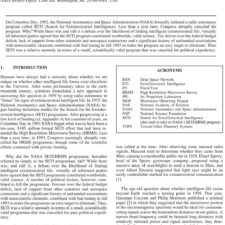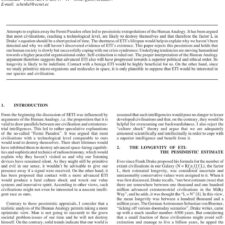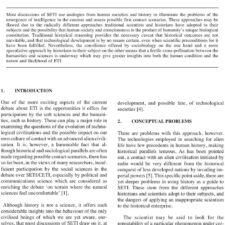Concept for a Very Large Space Based Radio Telescope for SETI
£5.00
R.L. DeBiase (2005), JBIS, 58, 357-366
Refcode: 2005.58.357
Abstract:
This paper presents a concept to reuse antenna and other structure from space solar power satellites in geo-synchronous orbit to produce radio telescopes with very large collection area. Typical space solar power concepts feature full array antennae having diameters of about one kilometre beaming to dedicated rectennae on the ground. However economic considerations may favor even larger antenna sizes, making one square kilometre a starting point for space solar power antenna sizes. Can radio astronomy, and SETI in particular, harness the potential large antenna collection areas inherent in space solar power to build very large space radio telescopes for marginal costs? Such a concept, besides having to make some economic sense, would need to find an `ecological niche’ relative to very large terrestrial arrays and smaller but very quiet observatories such as those proposed for the lunar far-side. The power satellite/telescope would depend upon interferrometry like the square kilometre array to counteract radio frequency interference, but like the lunar far-side observatory could observe at frequencies obscured by Earth’s atmosphere.





